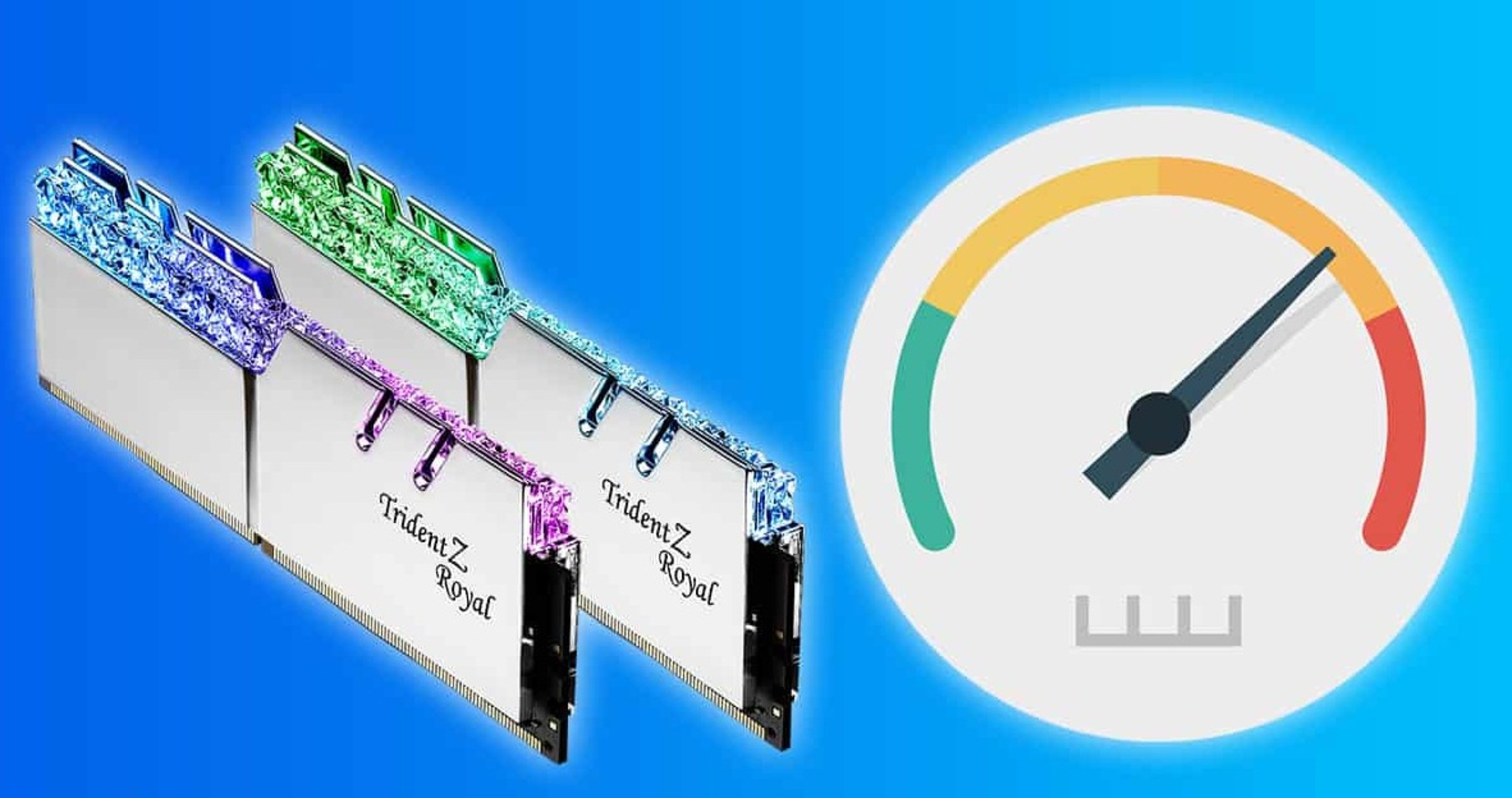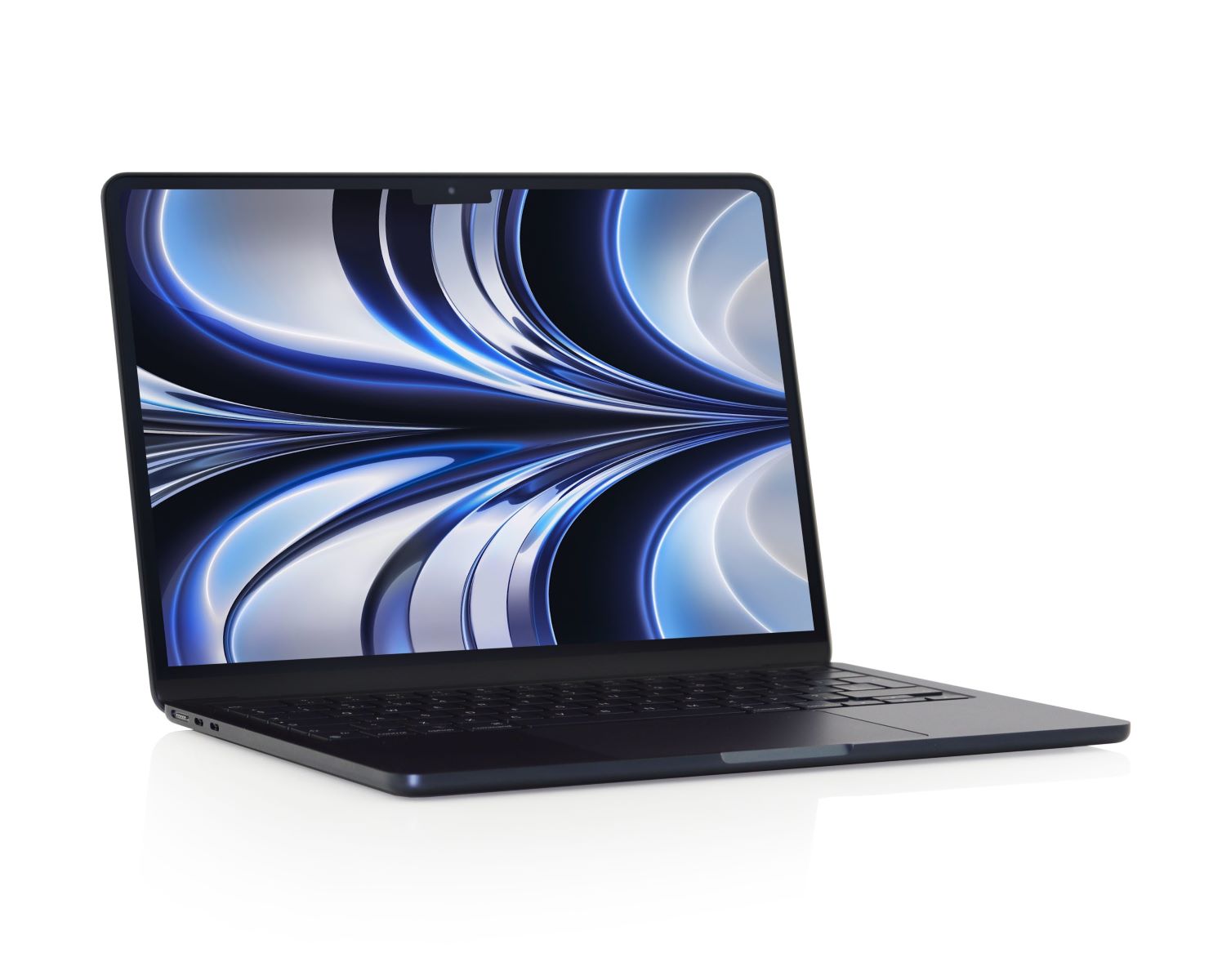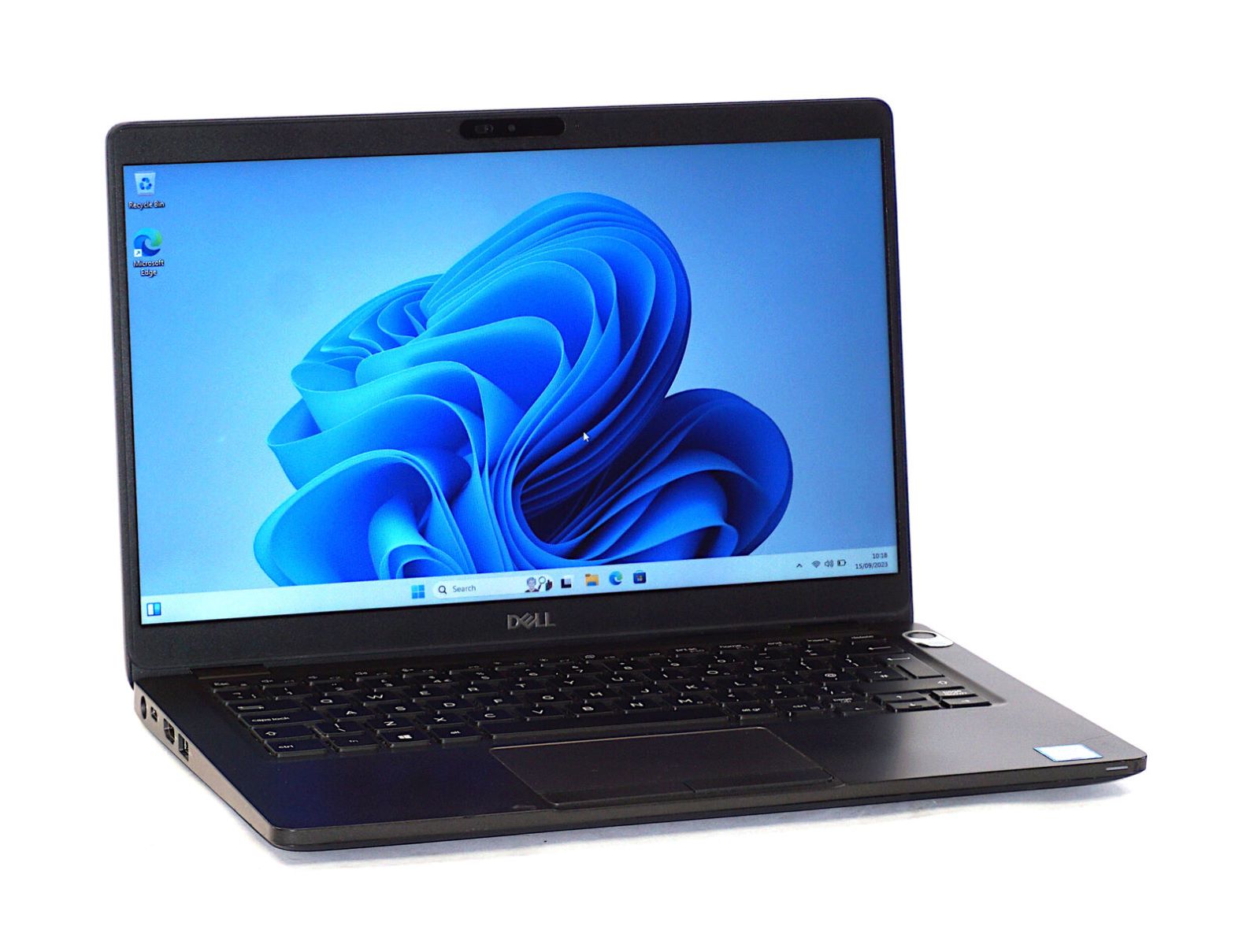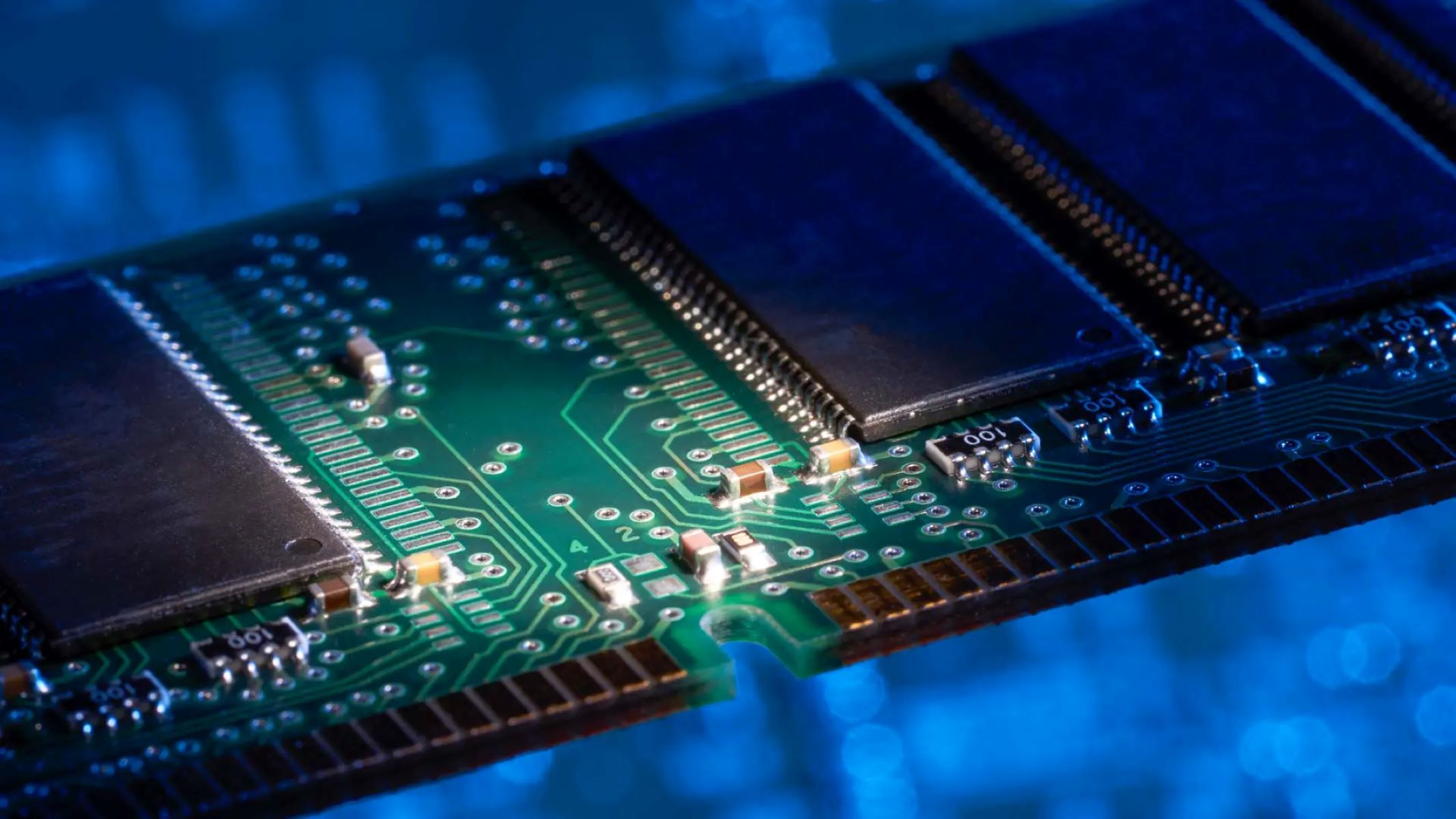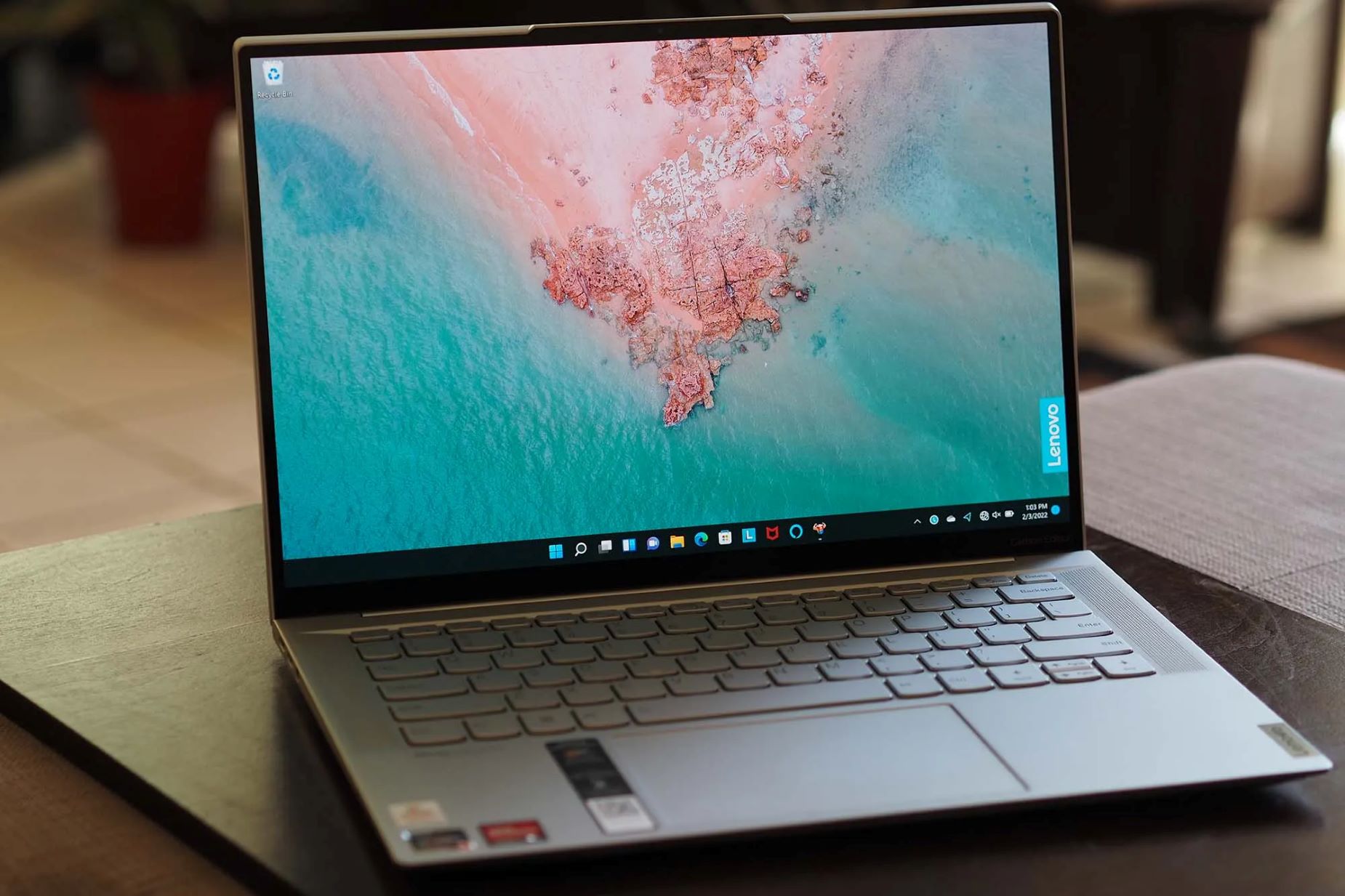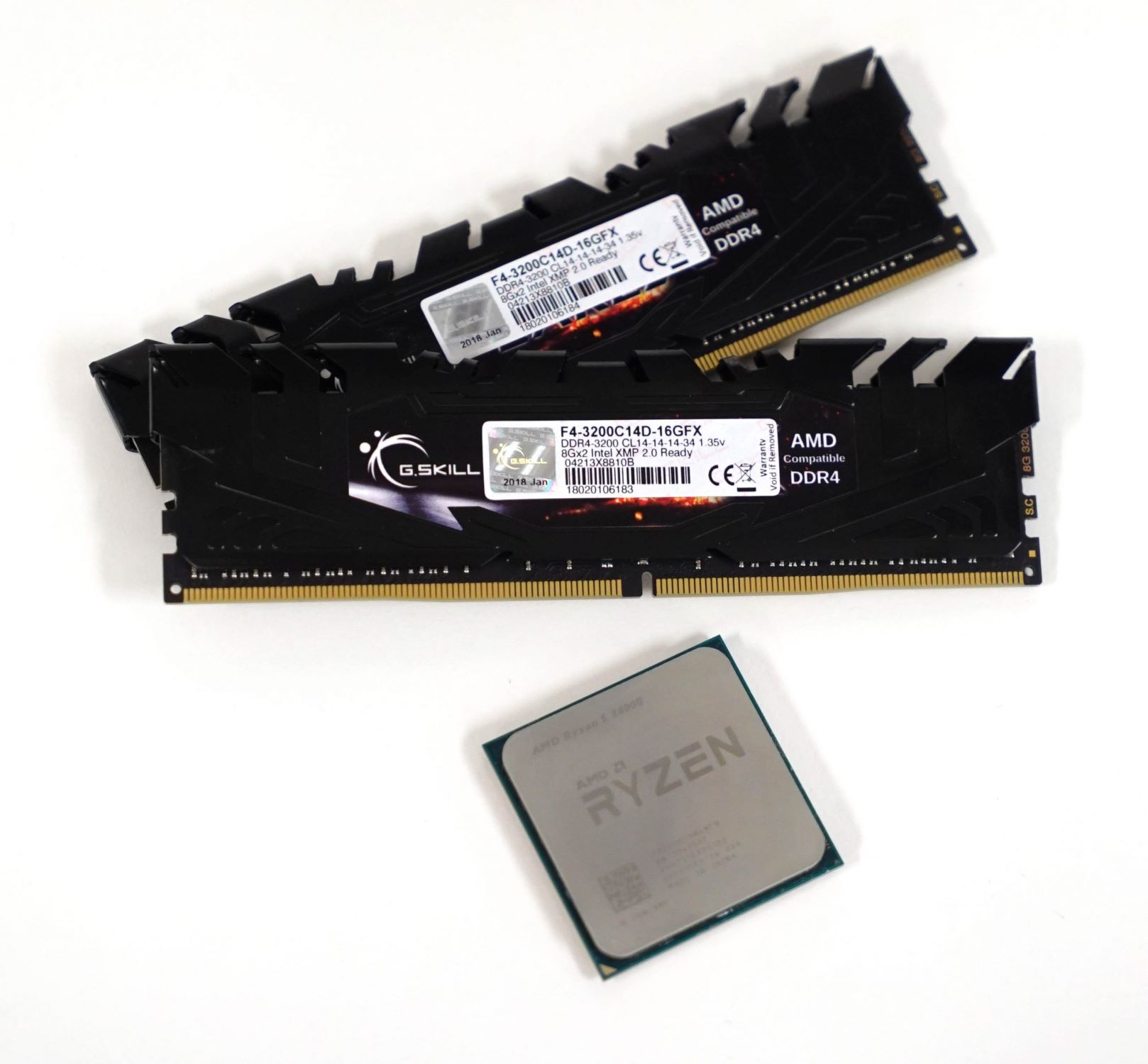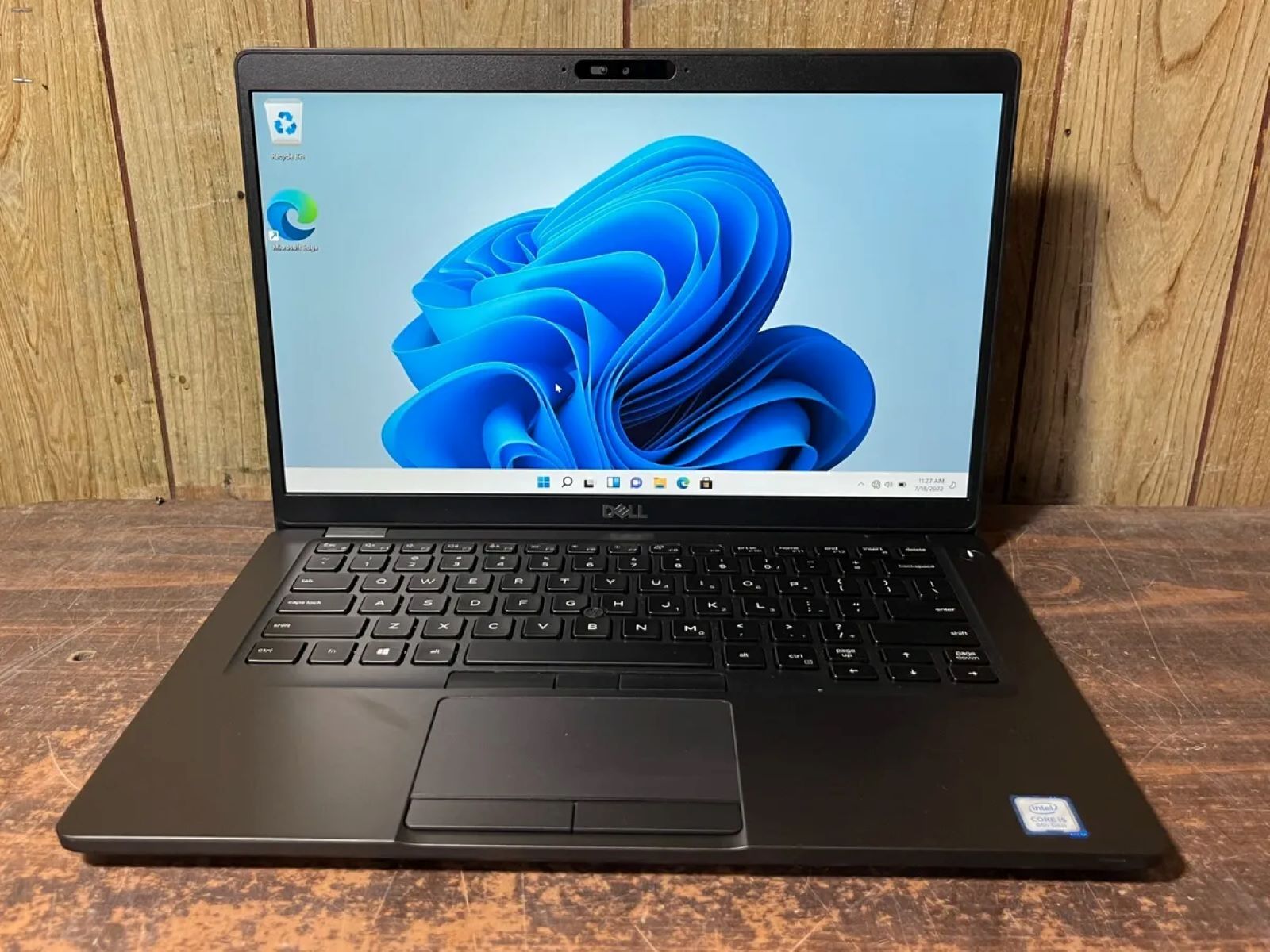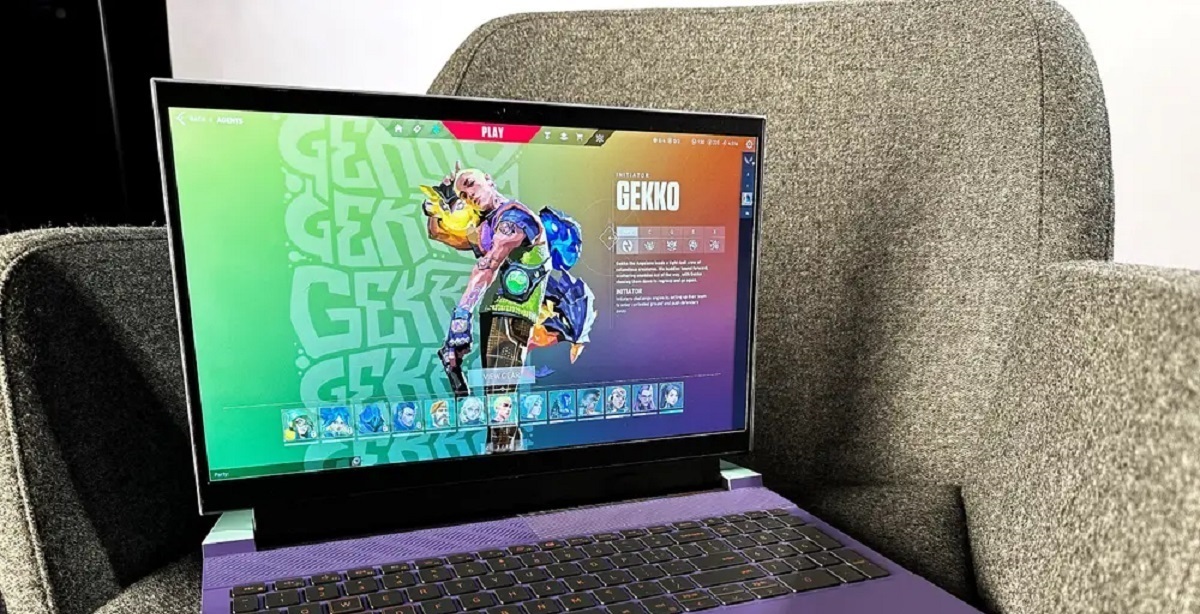Introduction
When it comes to optimizing the performance of your computer, one crucial factor that often goes overlooked is the speed of your RAM (Random Access Memory). While many people focus on the processor, graphics card, and storage capacity, the speed of your RAM can have a significant impact on your overall system performance.
RAM plays a crucial role in the operation of your computer. It acts as a temporary storage area for data that the CPU (Central Processing Unit) can access quickly. The faster your RAM can deliver data to the CPU, the faster your computer can process tasks and run applications.
In this article, we will explore why RAM speed matters and how it can affect the performance of your computer. We will also delve into the intricacies of RAM speed ratings and provide tips for selecting the right RAM speed for your specific needs.
Whether you are a casual computer user, a professional gamer, or a content creator, understanding RAM speed and its impact on your system is crucial for maximizing performance. So, let’s dive in and unravel the importance of RAM speed.
Why RAM Speed Matters
RAM speed plays a vital role in the overall performance of your computer. The speed at which your RAM can read and write data directly affects how quickly your computer can execute tasks and run applications. Here are a few reasons why RAM speed matters:
- Faster Data Transfer: With faster RAM speed, data can be transferred more quickly between your RAM and CPU. This means that your computer can process instructions and complete tasks more efficiently, resulting in snappier performance and reduced load times.
- Improved Multitasking: If you often find yourself running multiple applications simultaneously, having faster RAM can help ensure that each program has the necessary data readily available. This reduces lag and improves multitasking capabilities, allowing you to work seamlessly without experiencing slowdowns.
- Enhanced Gaming Performance: Gamers, in particular, can benefit greatly from faster RAM speed. Many modern games require large amounts of data to be loaded and processed quickly. By using faster RAM, you can minimize stutters, improve frame rates, and experience smoother gameplay.
- Optimized Content Creation: Content creators who work with resource-intensive applications like video editing software or graphic design tools can significantly benefit from faster RAM. The faster data transfer speeds allow for quicker rendering times, smoother editing, and a more efficient workflow.
- Future-Proofing Your System: Investing in faster RAM can also future-proof your computer to some extent. As technology advances and software becomes more demanding, having faster RAM ensures that your system can keep up and provides headroom for future performance improvements.
It’s important to note that while RAM speed is essential, it should not be the sole focus when considering system performance. Other factors such as CPU, graphics card, and storage speed also play a crucial role. However, when all other components are optimized, faster RAM speed can push your computer’s performance to the next level.
RAM Speed and CPU Performance
The relationship between RAM speed and CPU performance is intricate and significant. The speed of your RAM can directly impact how effectively your CPU processes instructions and completes tasks. Here’s how RAM speed affects CPU performance:
When the CPU needs data to execute a task or run an application, it fetches that data from the RAM. Faster RAM allows the CPU to access and retrieve data more rapidly, resulting in quicker task execution. Conversely, slower RAM speed can lead to data delivery bottlenecks, causing the CPU to wait for the necessary information, thereby slowing down overall performance.
Additionally, a higher RAM speed can enhance the performance of system-level operations, such as loading the operating system and launching applications. This is especially noticeable in instances where the CPU needs to access data from RAM frequently, such as during multitasking or resource-intensive tasks like video editing or gaming.
It’s important to note that the impact of RAM speed on CPU performance can vary depending on the specific workload. Certain applications and tasks are more dependent on CPU performance, while others may rely more on RAM speed. For example, tasks involving complex calculations or computations tend to be more CPU-dependent, while tasks that involve frequent data access rely more heavily on RAM speed.
Furthermore, the CPU and RAM work together in a symbiotic relationship to ensure optimal performance. If your CPU is capable of processing data at a high speed, but your RAM cannot keep up, it can create a performance bottleneck. On the other hand, if you have fast RAM but a slower CPU, the additional speed provided by the RAM may not fully utilize the CPU’s capabilities.
Overall, optimizing both CPU performance and RAM speed is crucial for achieving the best possible system performance. It’s essential to strike a balance between CPU power and RAM speed to ensure that the two components complement each other, allowing your computer to function seamlessly and efficiently.
Understanding RAM Speed Ratings
RAM speed ratings often confuse many users due to the variety of terminologies used. To better understand RAM speed, it’s essential to familiarize yourself with a few key concepts:
Clock Speed: The clock speed, measured in megahertz (MHz) or gigahertz (GHz), represents how quickly data can be read from or written to the RAM module. Higher clock speeds indicate faster data transfer rates.
CAS Latency (CL): CAS Latency is a timing measurement that determines how long it takes for the RAM to respond to a command. It’s denoted by a sequence of numbers, such as CL16 or CL18. Lower CAS latency numbers indicate faster response times and better performance.
DRAM Generation: Different generations of RAM, such as DDR3, DDR4, and DDR5, offer different speed capabilities. Each new generation typically provides higher clock speeds and improved performance compared to its predecessor.
Transfer Rates: RAM transfer rates specify the maximum amount of data that can be transferred per second. It’s represented in megabytes per second (MB/s) or gigabytes per second (GB/s). Higher transfer rates indicate better performance.
When choosing RAM, it’s important to consider your computer’s motherboard compatibility. Not all motherboards support the same RAM types and speeds. Consult your motherboard’s specifications to ensure compatibility with the desired RAM modules.
When comparing RAM speed ratings, it’s crucial to consider the trade-off between clock speed and CAS latency. A RAM module with a higher clock speed may have a higher CAS latency, which can impact overall performance. Analyzing both clock speed and CAS latency together will provide a more accurate understanding of RAM performance.
It’s worth noting that while faster RAM speeds can provide performance benefits, the real-world impact may vary depending on the specific workload. Everyday tasks like web browsing and word processing may not benefit significantly from high-speed RAM. On the other hand, resource-intensive tasks like gaming, video editing, and 3D rendering can benefit from faster RAM.
Understanding RAM speed ratings allows you to make informed decisions when selecting RAM modules that align with your specific needs and system requirements. By considering clock speed, CAS latency, DRAM generation, and transfer rates, you can find the optimal balance between performance and affordability for your computer.
RAM Speed and Gaming
When it comes to gaming, RAM speed can significantly impact your gaming experience. The speed of your RAM plays a crucial role in ensuring smooth gameplay, minimizing lag, and providing a more immersive gaming experience. Here’s why RAM speed matters for gaming:
Reduced Loading Times: Faster RAM allows your games to load more quickly. In modern games, there are vast amounts of data that need to be loaded from RAM into the GPU (Graphics Processing Unit) and CPU. With faster RAM speed, this data transfer happens at a faster rate, resulting in reduced loading times and faster level transitions.
Improved Frame Rates: A higher RAM speed can lead to improved frame rates in games. The CPU and GPU frequently exchange data during gameplay, and faster RAM speed enables quicker data transfer, ensuring that the GPU has a constant supply of data to render frames. This helps maintain smooth, uninterrupted gameplay and can lead to higher frame rates.
Reduced Stutters: Games often have moments where sudden spikes in data transfer are required. These spikes can cause temporary stutters or frame drops if the RAM cannot keep up with the demand. Faster RAM helps mitigate these issues by quickly providing the necessary data, resulting in a more consistent gaming experience.
Enhanced Multiplayer Performance: In online multiplayer games, a fast RAM speed can be particularly beneficial. Multiplayer games involve constant data exchange between your computer and the game server. Faster RAM speed ensures that this data transfer happens swiftly, reducing latency and ensuring a smoother and more responsive gameplay experience.
Compatibility with High-Resolution Gaming: If you’re gaming at high resolutions, such as 4K or playing VR (Virtual Reality) games, faster RAM can help handle the increased data demands. These high-resolution games require more data to be loaded into RAM for smooth performance, and faster RAM speed ensures a seamless experience without slowdowns or frame drops.
While RAM speed is essential for gaming, it’s important to note that it is just one aspect of a gaming system’s overall performance. The GPU, CPU, and storage speed also play significant roles. It’s essential to achieve a balanced configuration and ensure that all components work together optimally to deliver the best gaming experience.
Lastly, while faster RAM speeds tend to offer better gaming performance, the extent of the improvement can vary depending on the game and system configuration. Some games are more CPU-intensive, while others may benefit more from faster RAM. Nonetheless, investing in faster RAM can provide noticeable benefits and ensure a smooth and enjoyable gaming experience.
Overclocking RAM for Better Performance
Overclocking your RAM can be a means to achieve improved performance and squeeze out extra speed from your system. Overclocking involves increasing the clock speed and potentially adjusting other settings of your RAM beyond the manufacturer’s specifications. Here’s what you should know about overclocking your RAM:
Increased Performance: Overclocking your RAM can lead to a noticeable performance boost. By pushing the RAM clock speed past its default settings, you can achieve faster data transfer rates, reduced latency, and improved responsiveness, resulting in enhanced system performance and faster application loading times.
Compatibility Considerations: Not all RAM modules are designed to be overclocked, and overclocking can void the warranty on some RAM. It’s important to ensure that your specific RAM modules are capable of overclocking and that your motherboard supports the necessary settings. Reviewing the manufacturer’s specifications and consulting online resources or forums can provide valuable insights.
Stability and Heat Dissipation: Overclocking RAM can generate additional heat, so proper cooling is essential to maintain system stability. You may need to ensure adequate airflow within your PC case or invest in additional cooling solutions such as fans or liquid cooling. Monitoring your system temperatures using software tools can help ensure that your components stay within safe operating limits.
Testing and Tweaking: Overclocking RAM requires careful testing and tweaking to find the optimal settings. It’s important to gradually increase the clock speed and test for stability using stress-testing software. If stability issues arise, you may need to adjust other settings, such as timings or voltage, to achieve a stable configuration. It’s a process of trial and error, and patience is key to finding the balance between performance and stability.
Risks and Considerations: Overclocking your RAM carries inherent risks, including potential system instability, data corruption, or even permanent damage to your RAM or other components. It’s crucial to proceed with caution, follow recommended guidelines, and understand the potential consequences. Backing up important data before attempting overclocking is highly recommended.
Compatibility with Other Components: Overclocking RAM may have implications for other components such as the CPU or GPU. It’s important to assess the overall compatibility and stability of your system when pushing the limits of your RAM. Adjusting RAM clock speeds may require adjustments to other component settings to ensure proper synchronization and compatibility.
When done correctly, overclocking your RAM can result in noticeable performance improvements. However, it’s essential to weigh the potential risks, ensure compatibility, and closely monitor system stability to achieve a successful overclocking configuration.
How to Select the Right RAM Speed for Your Needs
Choosing the right RAM speed for your needs is crucial to maximize system performance and ensure compatibility with your specific requirements. Here are some factors to consider when selecting the appropriate RAM speed:
System Requirements: Start by assessing your system requirements. Consider the nature of your workload, whether it’s general computing, gaming, content creation, or other resource-intensive tasks. Different applications and tasks have varying demands on RAM speed, so understanding your specific use case will help guide your decision.
Budget: RAM speed often correlates with cost, with faster RAM modules typically being more expensive. Set a budget for your RAM purchase and prioritize your needs accordingly. If your budget is limited, consider striking a balance between cost and performance by selecting RAM with a reasonably high clock speed within your price range.
Compatibility: Ensure compatibility with your current system configuration. Check your motherboard’s specifications to determine the supported RAM types and speed. Some motherboards have restrictions on the maximum RAM speed they can handle, so it’s important to match the RAM speed with your motherboard’s capabilities.
Consider Future Upgrades: If you plan to upgrade other components of your system, such as the CPU or GPU, it’s essential to consider how the RAM speed will align with those upgrades. Taking a future-proof approach by selecting faster RAM now can help ensure that your system is capable of handling more demanding tasks in the future.
User Reviews and Recommendations: Research RAM options and read user reviews to understand real-world performance and user experiences. Pay attention to reviews specific to your intended use case, such as gaming or content creation. Trusted sources and forums can provide valuable insights and recommendations when making your decision.
Clock Speed and CAS Latency Balance: It’s important to find a balance between clock speed and CAS latency. Faster clock speeds can improve data transfer rates, while lower CAS latency values indicate faster response times. Striking the right balance between the two can optimize overall performance.
Overclocking Capabilities: If you have an interest in overclocking, consider RAM modules that have good overclocking potential. Modules specifically marketed for overclocking enthusiasts may provide better flexibility and headroom for achieving higher speeds.
By taking these factors into account, you can make an informed decision when selecting the right RAM speed for your needs. Remember, the goal is to match your requirements with the best combination of performance, compatibility, and budget to ensure a smooth and efficient computing experience.
Conclusion
RAM speed is a critical factor that directly impacts your computer’s performance, whether you’re a casual user, a professional gamer, or a content creator. Faster RAM speed enables quicker data transfer, reduces loading times, improves multitasking capabilities, and enhances gaming performance.
Understanding RAM speed ratings and the various factors involved, such as clock speed, CAS latency, and DRAM generation, allows you to make informed decisions when selecting the right RAM for your needs. Compatibility with your motherboard, future upgrade considerations, and budget constraints should also be taken into account.
Overclocking your RAM can provide further performance gains but should be approached with caution and proper cooling measures in place. Testing, tweaking, and monitoring system stability are crucial when pushing your RAM beyond its default settings.
Ultimately, finding the right balance between your specific requirements, performance expectations, and budget is key to selecting the optimal RAM speed. The right RAM speed can elevate your system’s overall performance and ensure a smooth user experience across a wide range of tasks.
Investing in faster RAM speed is worthwhile, especially for resource-intensive tasks such as gaming, video editing, and content creation. However, it’s important to remember that RAM speed is just one aspect of system performance, and a holistic approach, considering other components like the CPU, graphics card, and storage, is necessary for optimal performance.
By understanding the importance of RAM speed, considering system requirements, researching user reviews, and balancing clock speed and CAS latency, you can make an informed decision and select the right RAM speed that aligns with your computing needs.
So, whether you’re looking to enhance your gaming experience, boost productivity, or future-proof your system, optimizing your RAM speed is a vital step in achieving the best possible performance from your computer.







